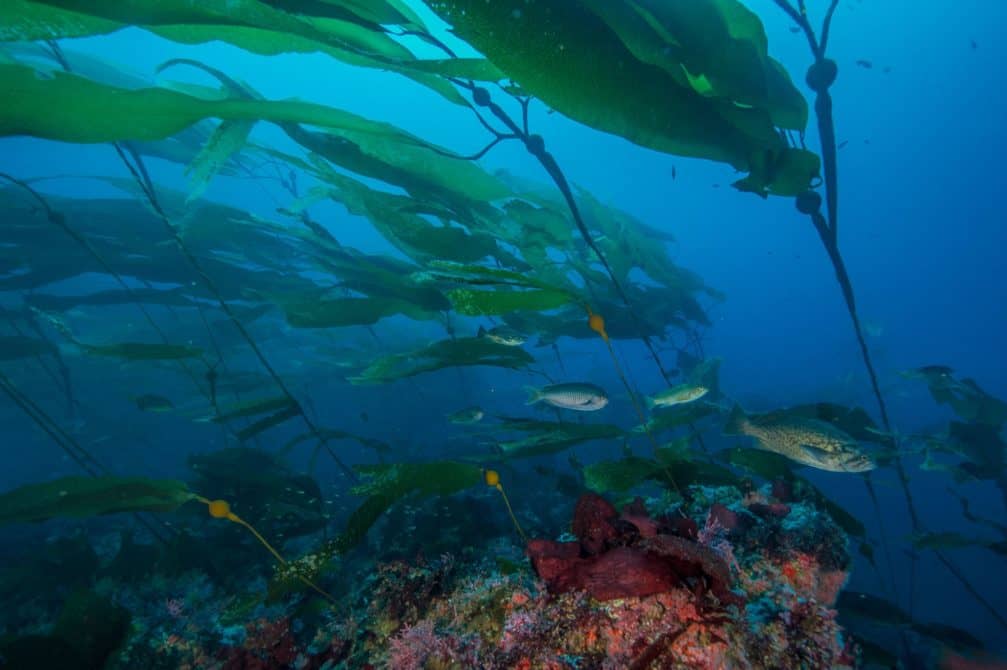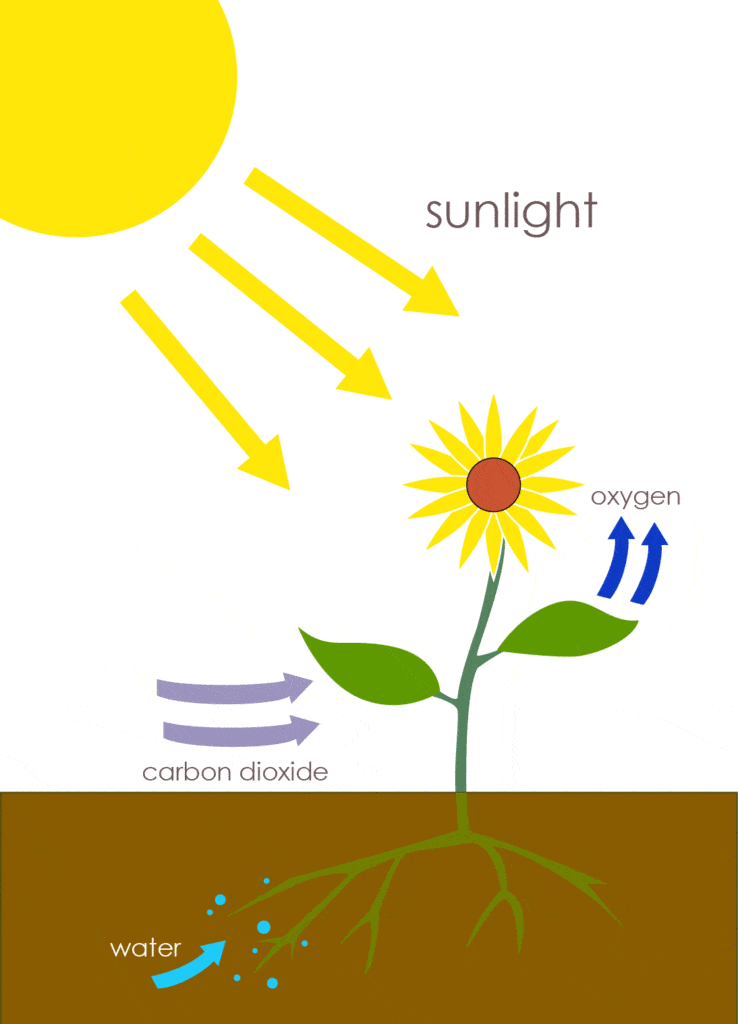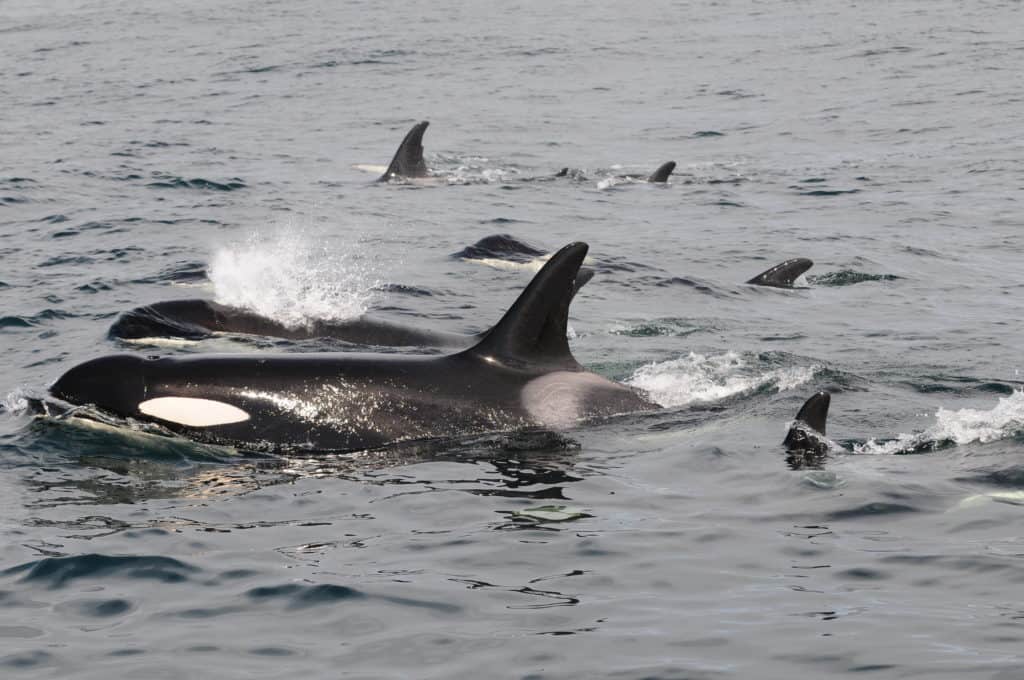
The Ocean Makes Earth Habitable
The millions of different species of plants and animals on Earth today are related to common ancestors that evolved from the ocean. Science suggests that, billions of years ago, all of the life on earth existed in the ocean. Very slowly, creatures began to move onto land and adapt to life outside of the ocean. Humans are very complex organisms but we too once evolved out of the sea! In fact, humans in the womb even have webbed fingers and toes, just like frogs!
All life requires water, food, space, protection, and oxygen. Take in a deep breath. Now breath out, slowly. Do this twice.
One of those breathes you took came from a plant in the ocean. On average, half of the oxygen that you breathe in comes comes from the ocean. All the requirement for life can be found in the ocean.
It is not only the plants on land that are producing the oxygen we breathe. In the ocean, algae and bacteria partake in Photosynthesis. Photosynthesis is when plants transform the carbon dioxide CO2, into food for everyone in the food web, and release oxygen.
Carbon Dioxide (CO2) + Sunlight + Water in plants makes Oxygen and Food!
During photosynthesis, energy from the sun and carbon dioxide are converted into chemical energy that the plant can use for food. As a result, oxygen is also created. This is used to power life.

Carbon is an important part of all life cycles and can be released into the ecosystem both from natural sources and unnatural ones. Fossil Fuels, like coal, oil, and gasoline, are also made of carbon, going up into the atmosphere. Made by life long ago, fossil “fuels’ were built up in long-term deposits that removed carbon compounds from the cycle.
That was until we we started to dig them up and burn them at a rampant rate. All life cycles carbon naturally but we are making record changes now by rampantly burning fossil fuels and releasing an excessive, unhealthy amount into the atmosphere. You can calculate your own carbon footprint with the Global Footprint Network
The ocean takes up about 30% of our fuel-burned emissions of CO2. Unfortunately, by absorbing all the excessive CO2, there has been another problem created: Ocean Acidification. This means that the ocean is getting more acidic. Acidity is measured on a scale from 1 to 14, with 1 being the most acidic and 14 being the most basic. Seawater naturally is usually around 8 on the scale which means it is slightly basic.
An acidic ocean can be corrosive, meaning it can chemically breakdown substances. Ocean life and marine ecosystems that we depend on are highly adapted to living in a slightly basic environment. Organisms that build a calcareous shell, such as clams, snails and crabs, are at risk because the acidic ocean breaks down their shells. Most of the life in the ocean will not be able to survive if it gets too acidic. Our survival is also dependent on a healthy working ocean.
The less CO2 we emit, the less likely we are to pass a point of no return for either warming or ocean acidification. We can reduce CO2 emissions and we can also remove carbon from the cycle by protecting habitats that bury carbon, long-term, in the sea floor. Ecosystems that bury carbon long term, which also often house photosynthetic plants which can turn that carbon to oxygen, are better at removing carbon from the ocean. By protecting these ecosystems we reduce the amount of carbon that is in the warming and acidification cycles.
Even though the ocean made life on land habitable in the first place, there is a limit to what the ocean can do to keep Earth habitable. Reducing rampant CO2 emissions and protecting blue carbon sinks are the right things to do.
These actions can help the ocean continue to make Earth habitable and protect people, place, and life supporting ecosystems for us and future generations. You can make an impact today.
With this knowledge, humans can work together to achieve the United Nations Sustainability Goals. With our understanding of the ocean, we can work towards the goals:
14.1 By 2025, prevent and significantly reduce marine pollution of all kinds, in particular from land-based activities, including marine debris and nutrient pollution
14.2 By 2020, sustainably manage and protect marine and coastal ecosystems to avoid significant adverse impacts, including by strengthening their resilience, and take action for their restoration in order to achieve healthy and productive oceans
14.3 Minimize and address the impacts of ocean acidification, including through enhanced scientific cooperation at all levels
14.5 By 2020, conserve at least 10 per cent of coastal and marine areas, consistent with national and international law and based on the best available scientific information
14.C Enhance the conservation and sustainable use of oceans and their resources by implementing international law as reflected in UNCLOS, which provides the legal framework for the conservation and sustainable use of oceans and their resources, as recalled in paragraph 158 of The Future We Want
Posted January 5, 2022 by Meighan Makarchuk

